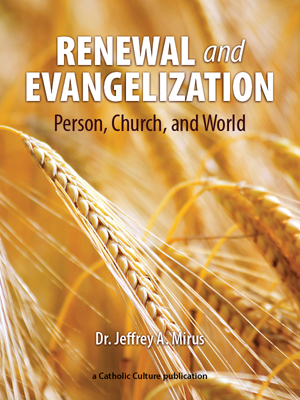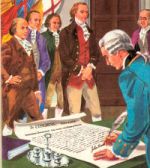St. Patrick: the patron saint of parish closings?
By Phil Lawler ( bio - articles - email ) | Mar 17, 2018
(This column, written six years ago, is re-posted annually by popular demand.)
Free eBook:

|
| Free eBook: Renewal and Evangelization |
Needless to say, there is no patron saint of parish closings.
The closing of a parish is a tragedy. A parish church is more than just a building. It is a repository of memories: of the children baptized there, the happy couples married, the parents mourned and buried. It is a testimony to the faith of the Catholic families who scrimped and saved and sacrificed to build a suitable house of worship for their community. It is a place of prayer, sanctified by the fervent pleas of people in trouble and the exultant joy of those to whom favors had been granted, the innocent praise of young children and the anxious worries of their parents and grandparents. Above all it is a house of God, where our Eucharistic Lord has reigned from his humble throne in the tabernacle. To close such a building—to turn it over to secular use—to let condos and boutiques grow up in the space where the faith once flowered—is unspeakably sad.
The closing of a parish is an admission of defeat. If the faithful could support a parish on this site at one time, why can they not support a parish today? American cities are dotted with magnificent church structures, built with the nickels and dimes that hard-pressed immigrant families could barely afford to donate. Today the affluent grandchildren of those immigrants are unwilling to keep current with the parish fuel bills—and, more to the point, to encourage their sons to consider a life of priestly ministry.
Parish closings are commonplace in America today, and prelates are praised for their smooth handling of what is seen as an “inevitable” contraction of the Church. Why is it inevitable?
There are times, I realize, when parishes are doomed by demographic shifts. I have seen the places where two Catholic churches were built, literally across the street from one another: one for the benefit of French-speaking families, the other for their German-speaking neighbors. The neighborhoods have changed, and now that all the residents speak the same language—Spanish—there is no need for two churches.
Such cases, however, account for only a small proportion of the parish closings that we see in the US today. More typically the parish slated for closing is located in a comfortable, populous neighborhood, with no other Catholic church particularly close at hand, and no special reason why the community that supported a thriving parish in 1960 cannot maintain the same parish now, 50 years later. No reason, that is, except the decline of the Catholic faith. Parishes close because Catholic families don’t care enough about the faith to keep them open.
In other instances the parishes close because although the neighborhood is still populous, the Catholic families have moved out and the new residents come from different religious backgrounds, or come without religious beliefs. In such cases, we are told, the Church must accept the new reality and realize that the neighborhood cannot support a parish. But why should we make such a concession? Why should we admit that it is impossible to convert the new residents to our Catholic faith?
Parish closings are rarely—if ever—“inevitable.” There is an alternative. We could bring lapsed Catholics back to the Church. We could bring new Catholics into the fold. The Gospels ring with the Lord’s mandate to his apostles to evangelize—not to economize.
No, there is no patron saint of parish closings, and there never will be. But St. Patrick, whom we honor today, might well be called the patron saint of the alternative.
When St. Patrick, having escaped slavery in Ireland, arrived again as a missionary, the country was pagan. By the time he died the country was Catholic. He came into a “neighborhood”—an entire nation—that could not support a parish. But he did not accept what lesser souls might have considered inevitable. Instead he changed the conditions of the neighborhood, and soon a parish was created. And another and another and another. During his years of ministry in the once-pagan country, he is said to have consecrated over 300 bishops. (The number of priests that he ordained is not recorded; maybe 5th-century calculators didn’t have enough digits.) In Ireland today there are seven dioceses—not parishes, dioceses—that date back to the years of St. Patrick’s missionary work.
If St. Patrick could convert an entire nation, why can’t we? We have material advantages that would have left St. Patrick gasping: the ability to travel hundreds of miles in a day, the capacity for instant communication across the globe. Is the content of the Catholic faith less viable today than it was in the 5th century? Is the guidance of the Holy Spirit less valuable? I know how St. Patrick would answer those questions.
Yes, there is an alternative to parish closings. Two alternatives, in fact, and they are not mutually exclusive:
1) We should pray for the emergence of new Catholic missionaries today with the same great gifts as St. Patrick,
and
2) We should all—each one of us, beginning today—strive to act more like St. Patrick ourselves.
All comments are moderated. To lighten our editing burden, only current donors are allowed to Sound Off. If you are a current donor, log in to see the comment form; otherwise please support our work, and Sound Off!







